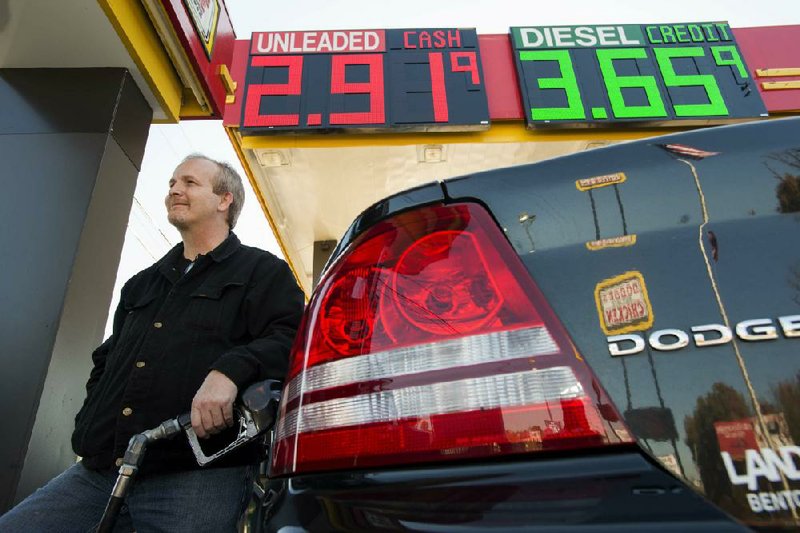LITTLE ROCK — Gasoline prices in Arkansas have dropped about 42 cents since mid-October, and industry analysts expect prices to continue to fall into the winter months.
The price of a gallon of gasoline is being pushed down by low demand - a normal occurrence for this time of year, said Tom Kloza, chief oil analyst for Oil Price Information Service.
“It happens every November,” he said. “Last year, we bottomed on wholesale gasoline on December 21, and that is kind of a normal time for prices to bottom.”
The average price for a gallon of regular unleaded gasoline in Arkansas was $3.19 on Monday, down almost 10 cents from last year, according to AAA’s Daily Fuel Gauge Report. The average price in the U.S. was about $3.44 per gallon.
Average gasoline prices in Arkansas ranged from $3.13 in the Little Rock and North Little Rock metropolitan area to $3.25 in the Fayetteville-Springdale-Rogers area.
On Monday, benchmark crude oil fell 50 cents to settle at $85.57 per barrel on the New York Mercantile Exchange. Wholesale gasoline fell 2.29 cents to finish at $2.68 per gallon.
The price of gasoline at the pump is lower now than it was last year in about 28 states, Kloza said.
The average price of gasoline could drop another 10 cents this year, with some states seeing it drop below $3 as long as nothing disrupts the market, said Don Redman, a spokesman for auto club AAA.
The seasonal price drop was delayed because of international concerns and supply shortages, but now the price drop is starting to show, he said.
“We certainly had anticipated prices to be dropping around this time of year,” Redman said. “While we anticipated ... that decline in September, we didn’t see it because of a number of factors.”
There have been several refinery shutdowns in North and South America and Europe in the last few months. Gulf Coast refineries in the U.S. closed when Hurricane Isaac hit Louisiana, and Northeast refineries shut down ahead of Hurricane Sandy.
Sandy pushed down gasoline prices in some areas, because demand dropped when people couldn’t drive or leave their homes a few days after the storm, said Phil Flynn, senior energy analysts for PFGBest, a brokerage firm.
“We saw a lot of demand destruction,” he said. “At the same time, we are starting to see recovery from the last hurricane, Hurricane Isaac, so we’re starting to see supply come back on line.”
Flynn said concerns about the “fiscal cliff” in the U.S. and an economic slowdown in China and Europe are also lowering the demand for gasoline.
“Nothing is worse for energy demand than a recession,” he said.
But don’t expect gasoline prices to continue the decline, Kloza said.
“The sneaking suspicion is that come March and April, prices will come up, but it’s a question of where and what,” he said.
Kloza said he doesn’t foresee gasoline prices falling should the U.S. become the world’s largest oil producer by 2020, surpassing Saudi Arabia, as the International Energy Agency predicted Monday in its World Energy Outlook.
In its report, the agency said a boom in shale drilling will allow the U.S. to also become a net exporter of natural gas by 2020, allowing the country to become “almost self-sufficient in energy” by 2035.
Flynn, who said a drop in energy dependence would equal more U.S. jobs, said he thinks gasoline prices could fall.
“This is historic and this can be a big driver for the economy,” Flynn said about the International Energy Agency report. “In a world filled with bleak economic news, this is historic and good news.”
Front Section, Pages 1 on 11/13/2012

